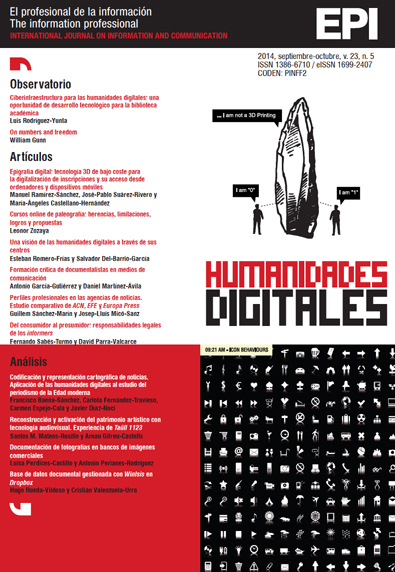Reconstruction and activation of the artistic heritage with audiovisual technology. Experience of Taí¼ll 1123
DOI:
https://doi.org/10.3145/epi.2014.sep.10Keywords:
Artistic heritage, Museums, Digital humanities, Audiovisual technology, Virtual reconstruction, Video mapping, Activation, Cultural dissemination, Taí¼ll 1123.Abstract
With the aim of preserving artistic heritage, in the past museums have removed paintings and furniture from the places they were created for. Over the decades the curators of these places have begun to request that these artistic works be returned, conscious of the significance that many of these works now have. Some institutions and museums have responded to these requests by providing copies of the original works. Traditionally these copies were handmade but now digital resources are used, such as audiovisual technology. The project Taí¼ll 1123 (Lleida, Spain) is an example of the use of these new tools for the benefit of the artistic heritage and its visitors.
Downloads
Downloads
Published
How to Cite
Issue
Section
License
Dissemination conditions of the articles once they are published
Authors can freely disseminate their articles on websites, social networks and repositories
However, the following conditions must be respected:
- Only the editorial version should be made public. Please do not publish preprints, postprints or proofs.
- Along with this copy, a specific mention of the publication in which the text has appeared must be included, also adding a clickable link to the URL: http://www.profesionaldelainformacion.com
- Only the final editorial version should be made public. Please do not publish preprints, postprints or proofs.
- Along with that copy, a specific mention of the publication in which the text has appeared must be included, also adding a clickable link to the URL: http://revista.profesionaldelainformacion.com
Profesional de la información journal offers the articles in open access with a Creative Commons BY license.




